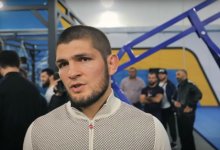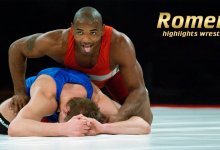Why Yoel Romero doesn't use his wrestling
A question came up after Yoel Romero lost to Israel Adesanya in their uneventful middleweight title fight at UFC 248. It is the same question people ask after many of Romero’s fights: “Why doesn’t Yoel use his wrestling?”
The commentators made note of it, and the fans made note of it. But is this really a valid question in 2020?
First, we have to look at the results of Romero’s takedown attempts against Adesanya. According to official statistics, Romero attempted three takedowns in his fight with Adesanya and was successful in none. To those who watched the fight, this may be surprising, as midway through the 4th round, Romero shot for a double leg and wrangled Adesanya to the ground.
However, Adesanya’s butt was on the mat for no more than a second. Romero did not establish control for any substantial period of time (let alone establish any offense), and thus he was not awarded a takedown in the official statistics. But make no mistake: that would have netted Yoel two points in a wrestling competition.
Yoel Romero is 42 years old, and we are a full 20 years removed from his winning silver at the 2000 Olympics. But he is still capable of scoring these against anyone in his weight division in the UFC. And he has done so throughout his career. The question of “why doesn’t he use his wrestling,” goes much deeper than age.
Joe Rogan has repeated it so often that it’s almost a cliché: wrestling is the most important base for MMA. While this statement is not without merit, sometimes we forget the simple fact that wrestling and MMA are different sports. They have different rulesets, different training methodologies, and perhaps most importantly: as a result of these divergent rulesets and divergent training methodologies, they have two completely divergent metagames.
A lot of high-percentage techniques in wrestling are extremely dangerous in MMA. Most of them can be – and in fact, are – adapted to work within the MMA meta, but there is yet another obstacle to adapting wrestling to this sport: taking someone down usually does not have any inherent value in MMA, neither in doing damage to the opponent nor in swaying the judges.
Romero simply has trouble retaining control of his opponents on the ground. The data I am about to present to you is perhaps not entirely scientific, but it is certainly not arbitrary, either. Being able to dish out ground and pound is the single most important skill of a high-level wrestler in MMA. And if we look at Romero’s UFC career, we find that while he has been able to take down most of his opponents, he has only landed a total of 100 strikes from the ground, in 140 attempts.
He has had some success with ground and pound, namely in his second fight with Robert Whittaker. But overall, that has not been where he is most comfortable. Given that Yoel has attempted a takedown in all but one of his UFC fights, and has successfully taken his opponent down in most of his fights (not even counting the times where his takedowns were not counted in the stats), this indicates a lack of ability to keep his opponents down rather than a lack of willingness to engage on the ground.
I know it’s unfair, but let’s compare Romero to perhaps the best ground and pound fighter in history.
Khabib Nurmagomedov has attempted 520 strikes from the ground in his UFC career, landing 379 of them. This is in fewer fights than Yoel. And Khabib was not really doing much ground and pound early in his career; he was mostly winning on points. His fight with Abel Trujillo was a perfect example of this; he controlled Trujillo for almost the entire fight, and took him down at will, but only attempted 25 strikes from the ground through three full rounds.
It was not until coming back from a two-year injury hiatus and facing late Tony Ferguson replacement Darrell Horcher that Khabib started to truly punish his opponents with strikes from the ground. And still, the difference between Khabib’s numbers and Yoel’s is almost fourfold.
In fact, Khabib very nearly matches Yoel’s career totals in ground strikes – both landed and attempted – in just one fight: against Michael Johnson.
Part of this could be due to their respective backgrounds. In sambo, a pindown of 30 seconds earns you four points. A 12-point advantage wins the match, so this is a huge incentive for sambists to seek the pindown, which in turn fosters a strong propensity for retaining top control. Wrestling also awards points for pindowns, but those only need to last one or two seconds.
In other words, Khabib – having reached the pinnacle of sambo – was already well-equipped to retain top control for long periods of time. This is not something that necessarily comes naturally for a wrestler like Yoel; it is a skill he would have had to develop and hone, which he has not.
He instead relies on his insane durability, explosiveness, and dangerous knockout power; beckoning his opponents to chase him as he picks and chooses his shots. And, by and large, this has worked for him. He is perhaps the best UFC fighter to have never won a belt. Adesanya, however, was not a willing dance partner.









